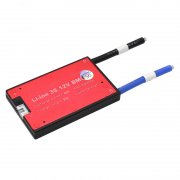
A Battery Management System (BMS) is essential for ensuring the safe and efficient operation of LiFePO4 (Lithium Iron Phosphate) batteries. It monitors voltage, temperature, and state of charge, preventing overcharging, over-discharging, and thermal runaway. However, like any electronic system, a BMS can fail. This article outlines what steps you can take if your LiFePO4 BMS fails, while emphasizing safety and best practices.
1. Inconsistent Voltage Readings: Fluctuating or incorrect voltage levels can indicate a malfunction.
2. Overheating: Excessive heat during operation may suggest BMS issues.
3. Inability to Charge or Discharge: If the battery won’t charge or discharge properly, the BMS might be compromised.
4. Warning Lights or Alarms: Many systems include alerts for BMS issues.
1. Safety First: Always prioritize safety. Disconnect the battery from any loads or charging devices.
2. Inspect the BMS: Check for visible damage such as burnt components or loose connections. If you’re comfortable, use a multimeter to test connections.
3. Consult the Manual: Refer to your BMS and battery manuals for troubleshooting steps specific to your model.
1. Understand the Risks: Bypassing the BMS can expose the battery to risks like overcharging or deep discharging, leading to damage or safety hazards.
2. Identify Connections: If you choose to bypass, carefully identify the BMS connections to the battery cells and loads.
3. Create a Safe Environment: Ensure you have proper ventilation and a fire extinguisher nearby when working with batteries.
4. Monitor Closely: If you proceed to bypass the BMS, closely monitor battery voltage and temperature to prevent unsafe conditions.
1. Choose a Compatible BMS: Ensure the replacement BMS is compatible with your LiFePO4 battery specifications.
2. Follow Installation Guidelines: Adhere to manufacturer instructions for installing the new BMS.
3. Test Thoroughly: After installation, perform thorough tests to confirm that the new BMS functions correctly.
1. Regular Maintenance: Periodically check connections, voltage levels, and battery health.
2. Invest in Quality Components: Use high-quality BMS systems and LiFePO4 batteries from reputable manufacturers.
3. Monitor Performance: Keep track of battery performance and address any irregularities immediately.
A failing BMS can pose challenges, but understanding the steps to take can help mitigate risks. Always prioritize safety, and consider bypassing the BMS only as a temporary solution. For long-term reliability, replacing the BMS and practicing regular maintenance will ensure your LiFePO4 battery operates safely and efficiently.
Next:What do you need to know about 18650 battery?
Previous:CATL Releases Tianxing Battery-Bus Battery with 10-year, 1 Million-Kilometer Warranty
Contact Person: Miss. Elsa Liu
| WhatsApp : | +8617763274209 |
|---|---|
| Skype : | +8617763274209 |
| WeChat : | 17763274209 |
| Email : | Elsa@lifepo4-battery.com |